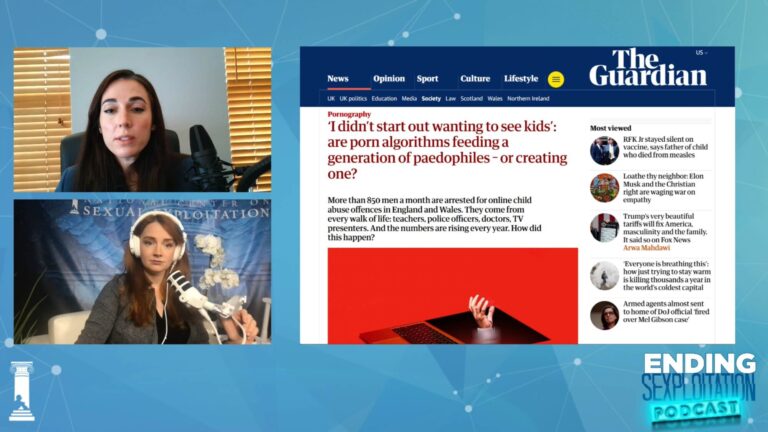Henry (pseudonym) was first exposed to pornography at the age of 12 in the form of a “hardcore” VHS film. Then, in his 20s, as the Internet’s capabilities grew, so did his compulsive pornography usage. Henry quickly became addicted to pornography and for 30 years, he led a double life, hiding his addiction from everyone except two of his therapists.
He felt side effects that resembled those experienced as a result of other types of addiction, including substance abuse or gambling.
“I feel like an addict. I emotionally isolate like an addict and I suffer the consequences like an addict. These websites are specifically designed to target addicts and keep them clicking,” said Henry.
Many who use pornography, like Henry, feel as though they cannot stop, despite the myriad of negative consequences and havoc it wreaks on their lives and relationships with others.
Experiences of individuals like Henry led neuroscientists at Cambridge University to explore possible similarities between compulsive sexual behavior (CSB, an impulse control disorder that encompasses compulsive pornography use) and known addictions like substance-use disorders or behavioral addictions like gambling.
Download this resource about the harms of pornography on children
Comparing Compulsive Pornography Users to Other Addictions
A 2014 study by neuroscientist Dr. Valerie Voon of Cambridge University and others scanned the brains of 19 men with CSB to see if they would respond more strongly than control subjects to cues associated with their pornography use—that is, would they react the way other addicts do when shown cues related to their addiction. In the case of persons with CSB the cues were sexual images, but for someone addicted to alcohol, a glass of wine would be considered a cue.
It’s important to note that all 19 men with CSB in the study we are discussing here reported excessive pornography use. In fact, the men with CSB reported using 25.5% of their total online activity time for viewing pornography compared to control subjects who spent only 4.5% of their total time online engaged in the same activity.
Thus, the results of the study shine interesting light on the question, “Is pornography addictive?”
It turns out that compulsive pornography users’ brains “lit up” when exposed to pornography cues in the same regions of the brain that people with other kinds of addictions do.
Dr. Voon said: “There are clear differences in brain activity between patients who have compulsive sexual behavior and healthy volunteers. These differences mirror those of drug addicts.”
Public Health Harms of Pornography
Key Findings from This Study
Disassociation of “wanting” and “liking”
In line with a theory of addiction known as Incentive Sensitization, the compulsive pornography users had a dissociation of “wanting” and “liking.” This theory has shown that while addicts report greater craving for the object of their addiction, the degree of pleasure they experience when they consume or engage in their addictive behavior doesn’t match. The study reported:
“Compared to healthy volunteers, CSB subjects had greater subjective sexual desire or wanting to explicit cues and had greater liking scores to erotic [less explicit] cues, thus demonstrating a dissociation between wanting and liking.”
Low Sexual Arousal with Romantic Partners
A majority of the compulsive pornography users (average age 25) had low libido and experienced erectile dysfunction with their real-life partners, although not with pornography. (Men in recovery often report that quitting pornography use restores their sexual function and attraction to partners.) This study noted that:
“CSB subjects reported that as a result of excessive use of sexually explicit materials. . . [they] experienced diminished libido or erectile function specifically in physical relationships with women (although not in relationship to the sexually explicit material). . . ”
This finding refutes the common argument that pornography addiction is just a result of “high sexual appetite.” Compulsive pornography users did not show high appetite for real sex; they only craved pornography.
Increased Activity in Regions of the Brain Associated with Addiction
Compulsive pornography users also had greater activity in the dorsal anterior cingulate cortex, ventral striatum, and amygdala areas of their brains. This activity is also seen in other substance and behavioral addicts. These brain regions are involved in motivation and craving.
In describing the study’s significance, Dr. Voon said:
“I think [ours is] a study that can help people understand that this is a real pathology, this is a real disorder, so people will not dismiss compulsive sexual behavior as something moralistic. . . This is not different from how pathological gambling and substance addiction were viewed several years ago.”
Talk Today, Safer Tomorrow
Growing Body of Research Spotlights Pornography’s Addictive Features
While this 2014 study alone doesn’t prove that pornography is inherently addictive, it is another brick in a growing wall of studies linking pornography use with addiction. Today, there are more than 60 neuroscience-based studies that support the pornography addiction model.
In 2017, Dr. Voon teamed up with several top scientists to publish a brief article in The Lancet addressing the question, “Is excessive sexual behavior an addictive disorder?” Keep in mind that compulsive sexual behavior includes problematic pornography use. They concluded:
“We believe that classification of compulsive sexual behavior disorder as an addictive disorder is consistent with recent data and might benefit clinicians, researchers, and individuals suffering from and personally affected by this disorder.”
In light of the preponderance of evidence emerging from studies like Voon et al.’s and others, the World Health Organization officially recognized compulsive sexual behavior disorder in its International Statistical Classification of Diseases and Related Health Problems 11 (ICD-11) in 2019. As NCOSE has stated previously, “Adding CSBD to the ICD-11 makes it a much more clearly diagnosable issue, so that people who struggle with it can get real help, instead of hiding in the shadows and being hurt by shame cycles.”
For a more detailed discussion of the Voon et al. study see NCOSE’s Research Spotlight, “Neural Correlates of Sexual Cue Reactivity.”


